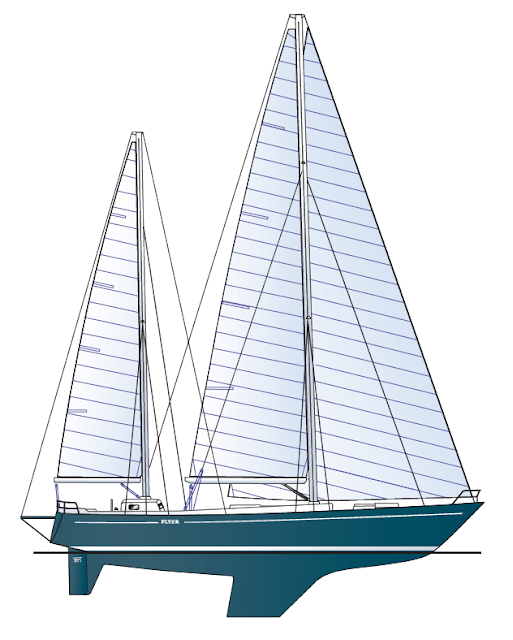PART ONE
From the 1970s Maxi to the first W60
From the first Whitbread Round the World Race, in 1974-75, the diversity of the competitors' designs has set the tone for this saga.
The first French competitor, André Vian's Grand Louis, finished 3rd, with a Dominique Presles design, built in polyester and polyurethane foam sandwich, fitted with a schooner rig with a length of 18.40 meters by 4.60 meters at beam.
The 4th, Jack Grout's Kriter, was 20.27 meters long, fitted as a ketch, and built out of molded wood according to Georges Auzépy-Brenneur’s the drawings.
 |
| Pen Duick VI Sections |
These two yachts designed for this adventure, looked like comfortable charter boats, quite different from the design of Pen Duick VI, 22.25 meters long, built in aluminum, with shapes derived from the last creations of André Mauric's IOR racers, with a ballast in depleted uranium.
 |
| 1974 Sayula II Lines |
However, it was a great classic, the Sayula II series Swan 65, designed by Sparkman & Stephens, who had been leading the race since the 1930s. With a generously sized beam, shapes that provided stiffness and slenderness, and very well balanced, the yacht kept its speed in heavy seas.
For the 1977-78 edition, the German Cornelis van Rietschoten asked Sparkman & Stephens to design a 65-foot winner with a longer waterline length, Flyer. Built in aluminum by the Huisman yard, the result was impressive. She won ahead of two other S & S designs, the Swan 65 Kind's Legend and Traité de Rome, also built at Huisman.
 |
| 1977 Flyer |
 |
| 1982 Flyer |
Four years later, the Whitbread was sailed again with 15 participants. L'Esprit d'Équipe, a 17.60 meter Philippe Briand's design, which had raced the previous edition under the name 33 Export, won on corrected time. With a light displacement and a fractional rig and reduced crew, Lionel Péan went first ahead of the rising strength of Bruce Farr's designs, including UBS Switzerland which revolutionized the design of Maxi yachts. The German company Judel/Vrolijk made its debut with Phillips Innovator, which finished second.
 |
| 1985-86 L'esprit d'Equipe |
In 1989, Farr Yacht Design office was the leading firm taking the three first positions, Peter Blake on Steinlager 2, Grant Dalton with Fisher & Paykel NZ and Pierre Fehlman aboard Merit. Alain Gabbay arrived in 6th position with the Guy Ribadeau's design Charles Jourdan, a light displacement of 21.90 meters.
 |
| 1989-90 Steinlager 2 |
For its sixth edition, the Whitbread broke new ground and launched the W60s, in the midst of five Maxi yachts, including three Farr designs in the leading position. With a length of 19.50 m for a beam of 5.25 m and a draft of 3.25 m, the air draft was 26 m and the displacement limited to 13,500 kg. Bruce Farr designed 7 of the 10 racers that could be filled with water ballast and had a fixed keel. Ross Field won the trophy in her class aboard Yamaha.
The New Zealand Endeavour's design shows Bruce Farr's understanding of the IOR rule, with extremely stretched bow shapes, a huge measurement bulge at frame number 6, where the water lines converge, and with a tapering stern, with a virtually flat bottom and flared sides.
 |
| 1993-94 Yamaha |
 |
| 1993-94 New Zealand Endeavour |



Aucun commentaire:
Enregistrer un commentaire